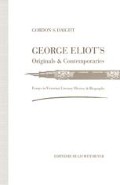Abstract
Every teacher of Middlemarch has encountered the disgust that undergraduates feel at the marriage of nineteen-year-old Dorothea Brooke to ‘loathsome old Edward Casaubon’. Though he was only 48, they never hesitate — despite a generation of sex-education — to describe him as ‘impotent’. Victorian novels supply many other examples of such marriages. Dr Strong in David Copperfield was 62 when he married his nineteen-year-old Annie. Charlotte Brontë created Mr Rochester twice the age of Jane Eyre, and in Villette married Augusta Fanshawe to a man ‘much older than papa’. Even in real life these disparate matches were not at all uncommon. Sir James Hope was 50 when in 1858 he married Victoria, the nineteen-year-old daughter of the Duke of Norfolk. Sir Charles Murray at the age of 56 married a daughter of George Eliot’s friend Lord Castletown, who was three years younger than his son-in-law. In 1863 the second Earl of Wilton at the age of 64 took as his second wife a girl who was younger than her step-children. According to Greville’s Diary the third Viscount Melbourne had the good fortune ‘at sixty years old, and with a broken and enfeebled constitution, to marry a charming girl of twenty’. Most of these matches were made to provide heirs, and (as the records show) often with success.
Access this chapter
Tax calculation will be finalised at checkout
Purchases are for personal use only
Preview
Unable to display preview. Download preview PDF.
Notes
This essay first appeared in Nineteenth-Century Perspectives: Essays in Honor of Lionel Stevenson, ed. Clyde de L. Ryals, John Clubbe, and Benjamin Franklin Fisher, IV (Durham, N.C.: Duke University Press, 1974) pp. 255–70.
A perceptive analysis of this passage by A. L. French is found in ‘A Note on Middlemarch’, Nineteenth-Century Fiction, vol. 26 (December 1971) pp. 339–47. But Mr Little regards the ‘disease of the retina’ as an allusion to Casaubon’s bad eyes.
Ernest Jones, Life and Work of Sigmund Freud, 3 vols (New York, 1953) vol. i, p. 174.
Mrs Elizabeth Gaskell, Life of Charlotte Brontë, 2 vols (London, 1857) vol. i, p. 226.
The George Eliot Letters, ed. Gordon S. Haight, 7 vols (New Haven, Conn., and London, 1954–5) vol. ii, pp. 319–20.
A. H. Sayce, Reminiscences (London, 1923) p. 86.
John Sparrow, Mark Pattison and the Idea of a University (Cambridge, 1967) pp. 16–17.
John Morley, ‘On Pattison’s Memoirs’, in Morley’s Critical Miscellanies, Works, vol. vi (London, 1921) p. 240.
Mrs Humphry Ward, A Writer’s Recollections (New York, 1918) p. 110.
Frances Power Cobbe, Life of Frances Power Cobbe, 2 vols (London, 1894) vol. ii, pp. 430–1.
Eliza Lynn Linton, My Literary Life (London, 1899) p. 43.
Gordon S. Haight, George Eliot and John Chapman, 2nd edn (New Haven, Conn., 1969) p. 24.
Frederic W. H. Myers, ‘George Eliot’, Century Magazine, vol. 23 (November 1881) p. 60.
Editor information
Copyright information
© 1992 Mary N. Haight
About this chapter
Cite this chapter
Haight, G.S. (1992). Poor Mr Casaubon. In: Witemeyer, H. (eds) George Eliot’s Originals and Contemporaries. Palgrave Macmillan, London. https://doi.org/10.1007/978-1-349-12650-7_2
Download citation
DOI: https://doi.org/10.1007/978-1-349-12650-7_2
Publisher Name: Palgrave Macmillan, London
Print ISBN: 978-1-349-12652-1
Online ISBN: 978-1-349-12650-7
eBook Packages: Palgrave Literature & Performing Arts CollectionLiterature, Cultural and Media Studies (R0)

